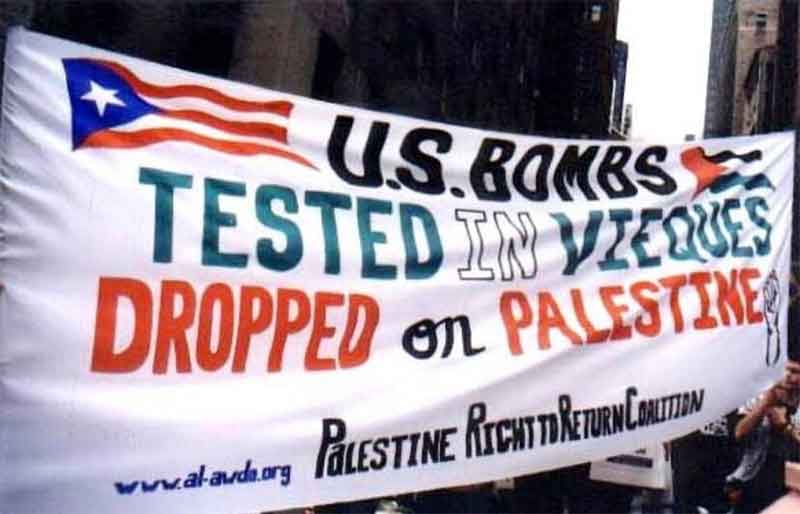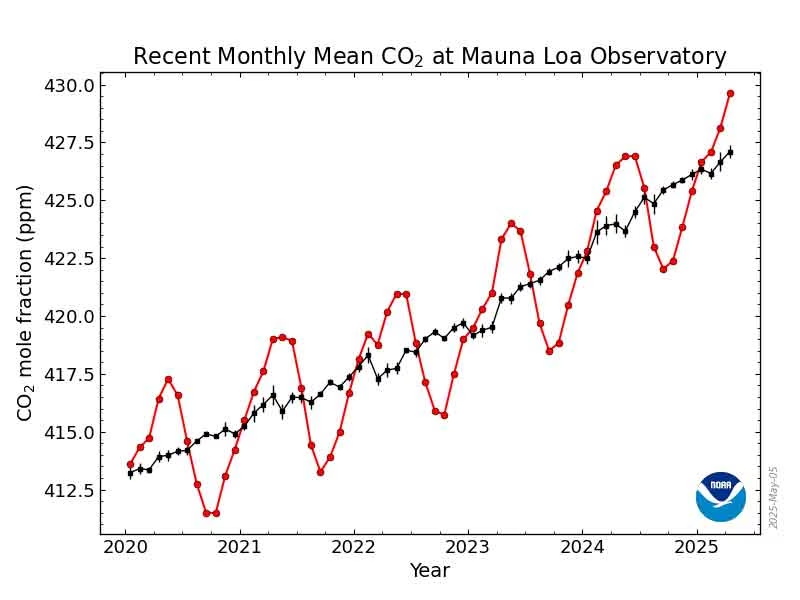
Around two years ago, I watched a puppet show, created by a group of eight to 16-year-olds at the summer camp where I worked, about the eviction of the U.S. Navy from the island of Vieques. After I conducted a few brief workshops reviewing the island’s history of military occupation and contamination, the campers immediately grasped the importance of the decades long struggle to evict the U.S. Navy, which they represented with a puppet of a venomous snake; on the other hand, they used the iconic native Puerto Rican frog, the coquí, to depict participants in the popular uprising against the U.S. military.
This May marked 22 years since the US Navy was evicted from the island of Vieques. The story of Vieques should be understood by us organizers, just as it was by these campers through their puppet show, as we seek to build an anti-militarist climate movement that breaks down silos between supposedly separate organizing spaces. As we seek to build an anti-militarist climate movement and shape the global narratives in upcoming events, looking at Vieques’ past and present history is crucial.
Vieques is an island off the coast of mainland Puerto Rico, a U.S. colony since 1898, in a state of limbo where Boricuas (Puerto Ricans) have U.S. citizenship but cannot vote, and at the same time, are unable to pursue self-determination through independence. Vieques was long exploited by wealthy landowners and the U.S. mainland’s economy for sugar production. In 1941, the Navy seized Vieques, with the goal of creating a colonial outpost in the Atlantic Ocean to mirror its base occupying Hawai’i, Pearl Harbor, in the Pacific. The island’s population of 10,000 was then forced to relocate to a small area of the island. Some wealthy landowners sold their land, while the U.S. government confiscated other plots of land for “public” use.
For over 60 years, the U.S. Navy used Vieques as a bomb testing site, scorching the crust of the island by dropping around three million pounds of napalm, depleted uranium, and other toxic chemicals onto the land. Many of these bombs would then go on to be used on the people and soil of Palestine, itself a deadly testing ground for the U.S. war machine. Despite the extraordinary levels of chemical pollution, there was no hospital on the island. Additionally, the 1920 Jones Act restricted Puerto Rico to importing only U.S.-built, U.S.-owned, U.S.-operated, and U.S.-crewed cargo. This stranglehold continues to make any resources for the island extremely expensive.
These were clear-cut conditions. The U.S. empire was poisoning the island and cutting it off from necessary goods, demonstrating Puerto Rico’s broader colonial status. In 1999, Daniel Sanes Rodriguez, a civilian employee of the naval base, was killed by an accidental off-target bomb. This was the spark of a protest movement made up of tens of thousands of people demanding the U.S. military leave the island. Protest tactics included encampments in the bomb range, graffiti, destruction of military property, and marches that included every sector of society, including religious leaders, fishers, environmental activists, students, and labor leaders. It also included leaders who were independence activists, statehood advocates, and advocates for commonwealth status.
In 2001, President George Bush announced that the naval base would be closed. In May 2003, the U.S. Navy left the island and, ironically, converted the former base into a nature reserve. While the U.S. government has stalled for two decades in its promises of clean-up, this was a moment of victory. This monumental achievement was brought about by as wide an array of groups as the base impacted. By uniting in a popular struggle against U.S. militarism, the people of Vieques showed the world that the naval base had absolutely no business continuing to occupy their land. This moment was also considered a massive touchstone in the fight for a free and independent Puerto Rico.
This isn’t to say that these tactics, this moment, or this rubric for what constitutes victory can be applied to every situation. But we can learn a lot about movement building and breaking out of what can appear to be separate organizing spaces. This was a win for independence, environmentalists, survival, and sovereignty. It’s pretty simple: wherever the U.S. war machine is active, the fight against it and for sovereignty is the fight for the land.
So why isn’t this mirrored within the belly of the beast? Sometimes it is, in the examples of protests to stop the building of Cop City in Atlanta and in protests against the construction of new prisons. But when we discuss “the climate movement” and “the anti-war movement,” we must address why they’re institutionally separated through organizations, slogans, and targets. It’s no mystery – we can go down the list: funding, “pragmatism,” societal conditioning, greenwashing, internalized racism.
With COP, the U.N. Climate Conference, less than six months away, it’s time to clarify our targets and identify the flashpoints of struggle. However toothless, co-opted, and irredeemable the annual “diplomatic” event is, with countries around the world cyclically refusing to take any meaningful action to address the climate crisis, it is also an event where the world’s climate movement plays a large role in shaping narratives, either in the conference itself or in people’s counter-conferences.
We must call attention to Puerto Rico – how it has been used for NATO training to continue escalation in the environmentally catastrophic Ukraine war, and how it has served the U.S.’s claim of Latin America and the Caribbean as its so-called backyard through its role in the U.S. Southern Command. Just as U.S. militarism in Hawai’i and the Philippines has been used to claim the Asia-Pacific in its escalation against China. We must trace the deadly supply chain of the bombs tested on Vieques, which have since been used to decimate entire communities in Palestine, destroying the local and global environment. And we must highlight the poisoning of the soil in Vieques, where residents are 27% more likely to be fighting cancer than the rest of Puerto Rico, and 280% more likely to be fighting lung cancer specifically. The same empire that poisoned Vieques now strangles Cuba, Nicaragua, and Venezuela with sanctions, blocking their ability to address the climate crisis effectively. These sites of struggle for national sovereignty are just as much about our collective survival.
This year, at COP and in every climate space, our only hope is to learn from and center the past and present struggle in Vieques and everywhere else bearing the brunt of U.S. militarism, to clearly understand where our enemies converge, and to act accordingly. Because one thing that we can learn from Vieques and from the eight to 16-year-old campers telling Vieques’ story is that it’s clear when something is a venomous snake.
Subscribe to Our Newsletter
Get the latest CounterCurrents updates delivered straight to your inbox.
Aaron Kirshenbaum is CODEPINK’s War is Not Green campaigner and East Coast regional organizer. Based in and originally from Brooklyn, New York, Aaron holds an M.A. in Community Development and Planning from Clark University. They also have a B.A. in Human-Environmental and Urban-Economic Geography from Clark. During their time in school, Aaron worked on internationalist climate justice organizing, educational program development, and Palestine, tenant, and abolitionist organizing.














































